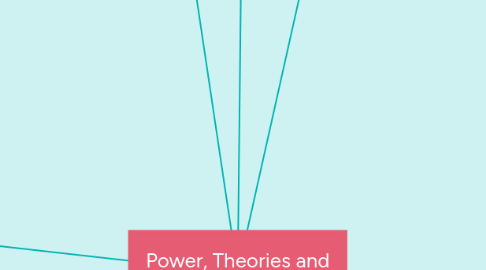
1. 90s Theories
1.1. The end of History
1.1.1. Author: Francis Fukuyama
1.1.2. Capitalism=no more conflicts
1.1.3. Democracy
1.1.3.1. Capitalism
1.1.4. History= Conflicts
1.2. Clash of civilizations
1.2.1. Author: Samuel Huntington
1.2.2. Globalization=Culture more relevant
1.2.3. Fought for political or ideological reasons
1.2.4. Now because of cultural reasons
2. Systems
2.1. Centripetal
2.1.1. Union
2.1.2. Economic Integration
2.1.2.1. Economic alliance
2.1.2.2. Economic bloc
2.1.3. Neoliberalism
2.1.3.1. Capitalism
2.1.3.2. Free trade
2.1.3.3. An ideology
2.1.4. Globalization
2.1.4.1. Economic integration
2.1.4.2. Cultural integration
2.1.5. Supranationalism
2.1.5.1. Form IGO
2.1.5.2. to solve common problems
2.2. Centrifugal
2.2.1. Separation
2.2.2. Nationalism
2.2.2.1. Identity
2.2.2.2. Belonging
2.2.2.3. Irredentism
2.2.2.3.1. Different territories
2.2.2.3.2. come together again
2.2.2.4. Separatism
2.2.2.4.1. Nation inside a State
2.2.2.4.2. State becomes independent
2.2.3. Fundamentalism
2.2.3.1. Conservative
2.2.3.2. Interpretation of
2.2.3.2.1. Religion
2.2.3.2.2. Ideology
2.2.3.3. Result of
2.2.3.3.1. Obedience
2.2.3.3.2. Fanatism
2.2.4. Terrorism
2.2.4.1. Violence
2.2.4.2. Intimidation against civilians
2.2.4.3. To achieve political goals
3. Theories of International Relations
3.1. Realism
3.1.1. Motivation
3.1.1.1. More power
3.1.2. Moral behavior limits
3.1.2.1. states to protect itself
3.1.3. International organizations
3.1.3.1. International law
3.1.3.2. No power or force
3.1.4. It is important
3.1.4.1. Military power
3.2. Liberalism
3.2.1. International cooperation
3.2.1.1. convenient for everybody
3.2.2. International Rules
3.2.2.1. International organizations
3.2.3. can help to promote
3.2.3.1. Cooperation
3.2.3.2. Trust
3.2.3.3. Prosperity
3.2.4. It is important
3.2.4.1. Social Power
3.2.4.2. Economic Power
3.2.4.3. Military Power
3.3. Radicalism
3.3.1. Dominant states
3.3.1.1. exploit
3.3.1.2. less developed countries
3.4. Constructivism
3.4.1. International Politics
3.4.1.1. not static
3.4.2. Shaped by
3.4.2.1. Ideas
3.4.2.2. Collective Values
3.4.2.3. Culture
4. Levels of analysis in a conflict
4.1. Individual
4.1.1. Leader
4.1.1.1. Characteristics of Individuals
4.1.1.2. Personality
4.1.1.3. Psychology
4.1.1.4. Individual worldviews
4.1.1.5. Perception
4.1.1.6. Leadership style
4.2. Domestic
4.2.1. Country/State
4.2.1.1. National Attributes
4.2.1.2. Regime Type
4.2.1.3. Economic system
4.2.1.4. Culture
4.3. Interstate
4.3.1. Type of system
4.3.1.1. Structural characteristics
4.3.1.2. Polarity
4.3.1.3. Distribution of power
4.3.1.4. Interdependence
4.4. Global
4.4.1. World
5. Power
5.1. An international actor can influence or force other actors because of the capabilities it possess.
5.2. Power from
5.2.1. Natural Resources
5.2.1.1. Geography
5.2.1.2. Population
5.2.1.3. Resources
5.2.2. Non-Natural Resources
5.2.2.1. Hard Power
5.2.2.1.1. Industrial Development
5.2.2.1.2. Army
5.2.2.2. Soft Power
5.2.2.2.1. Leadership
5.2.2.2.2. Image
5.2.2.2.3. Public Support
6. International System
6.1. Distribution of power
6.1.1. Between countries at a certain moment
6.2. Types
6.2.1. Classified as number of importance, the actors have
6.2.1.1. Unipolar
6.2.1.1.1. Only one actor
6.2.1.2. Bipolar
6.2.1.2.1. Two equally important actors
6.2.1.3. Multipolar
6.2.1.3.1. Several countries whose power is comparative
7. Respond to conflict
7.1. Unilateral
7.1.1. Alone
7.1.2. Own interest
7.2. Bilateral
7.2.1. Partnership
7.2.2. Mutually Benefitial
7.3. Multilateral
7.3.1. Group action
7.3.2. Common issue
